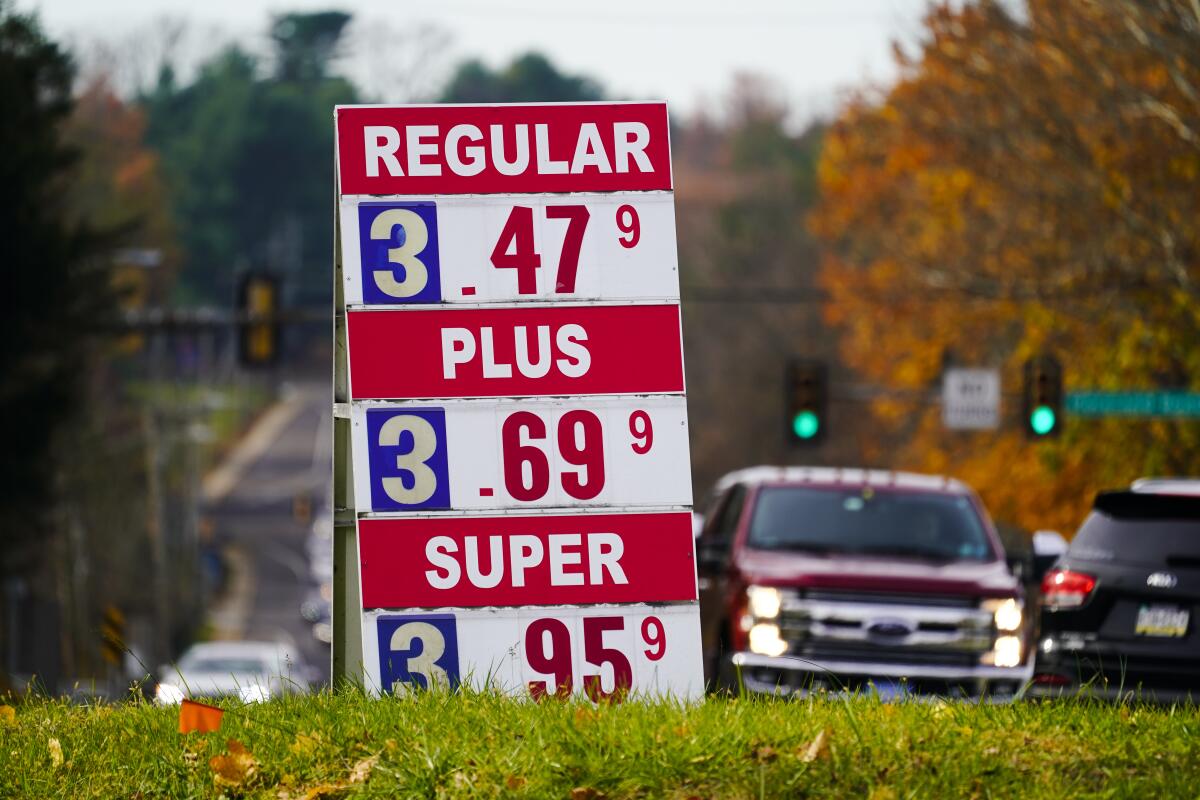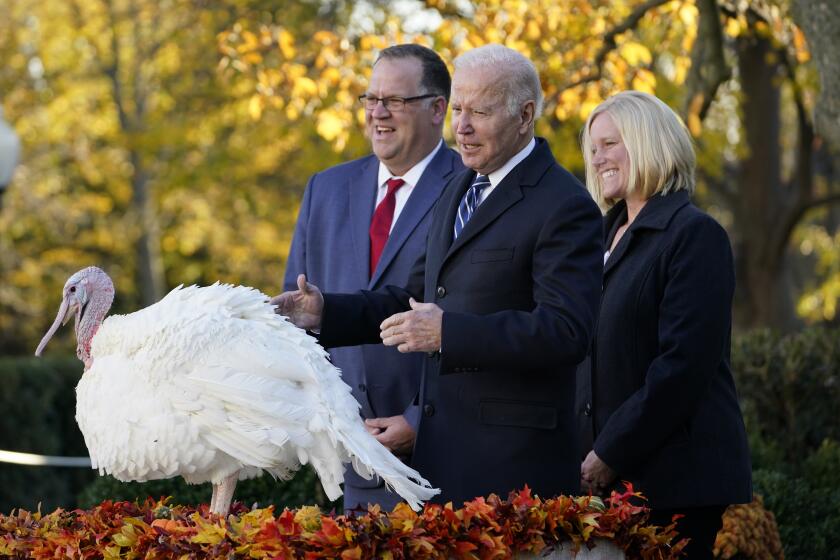U.S. consumer prices rise 6.8% in the last year, most since 1982

- Share via
WASHINGTON — Prices for U.S. consumers jumped 6.8% in November compared with a year earlier as surging costs for food, energy, housing and other items left Americans enduring their highest annual inflation rate since 1982.
The Labor Department also reported Friday that from October to November, prices jumped 0.8%.
Inflation is starting to look like that unexpected — and unwanted — houseguest who just won’t leave.
Inflation has been intensifying pressure on consumers, especially lower-income households and particularly for everyday necessities. It also has negated the higher wages many workers have received, complicated the Federal Reserve’s plans to reduce its aid for the economy and coincided with flagging public support for President Biden.
Fueling the inflation has been a mix of factors resulting from the swift rebound from the pandemic recession: a flood of government stimulus, ultra-low rates engineered by the Fed and supply shortages at factories in the U.S and abroad. Manufacturers have been slowed by heavier-than-expected customer demand, COVID-related shutdowns and overwhelmed ports and freight yards.
California’s small businesses waded through COVID to a rebound in consumer spending, only to face rising costs for supplies and wages.
Employers, struggling with worker shortages, have also been raising pay, and many of them have boosted prices to offset their higher labor costs, thereby adding to inflation.
The result has been price surges for a wide variety of goods including food, electronics, household furnishings and used vehicles. The acceleration of prices, which began after the pandemic hit as Americans stuck at home increased demand for goods faster than factories could supply them, has spread to services, including apartment rents, restaurant meals, medical care and entertainment.
The persistence of high inflation has surprised the Federal Reserve, whose chair, Jerome H. Powell, had for months characterized inflation as only “transitory,” a short-term consequence of bottlenecked supply chains. Two weeks ago, though, Powell signaled a shift, implicitly acknowledging that high inflation has endured longer than he expected. He suggested that the Fed probably would act more quickly to phase out its ultra-low-rate policies than it had previously planned.
Are inflation fears unreasonable? It depends on how you’re spending your money.
Some economists are holding out hope that inflation will peak in the coming months and then gradually ease and provide some relief for consumers. They note that supply shortages in some industries have begun to gradually ease. And while higher energy costs will continue to burden consumers in the coming months, Americans probably will be spared from earlier forecasts that energy prices would reach record highs over the winter.
Oil prices have been declining modestly, leading to slightly lower gasoline prices. A gallon of gas is averaging $3.38, according to AAA, down from $3.42 a month ago.
Even more dramatically, natural gas prices have plummeted nearly 40% from a seven-year high reached in October. The result is that while average home heating costs will well exceed last year’s levels, they won’t rise as much as had been feared.
Food prices too could potentially ease as a result of sharp declines in corn and wheat prices from their highs earlier in the year.
Financial markets, which had largely anticipated Friday’s inflation figures, took them in stride. Treasury yields and stock prices held relatively steady, while a measure of fear on Wall Street eased. Russell Price, chief economist at Ameriprise, said the market response suggests that investors have become accepting of the reality that the Fed will accelerate its pullback of the emergency economic aid it supplied after the pandemic.
Speaking at the White House, Biden said of the inflation report, “I think it’s the peak of the crisis, and I think you’ll see a change sooner and more rapidly than most people think” to more moderate price increases.
More to Read
Inside the business of entertainment
The Wide Shot brings you news, analysis and insights on everything from streaming wars to production — and what it all means for the future.
You may occasionally receive promotional content from the Los Angeles Times.













